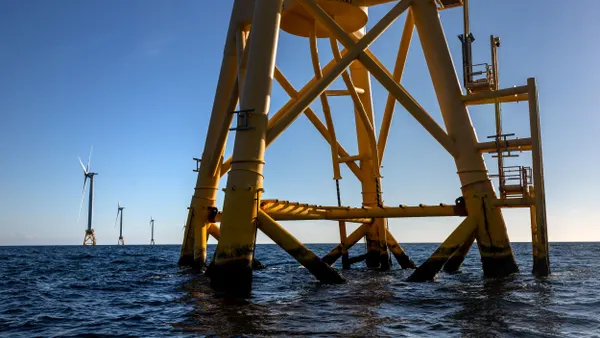Dive Brief:
- Solar energy stakeholders in Pennsylvania last week kicked off a 30-month planning process aimed at bringing more solar energy onto the state's grid. Participants in the "Finding Pennsylvania’s Solar Future" include government officials, consumer advocates, utility representatives and the solar industry.
- Under the initiative, solar stakeholders will explore options to increase solar-generated energy, with an aspirational goal of 10%. The project was funded by a $550,000 award from the U.S. Department of Energy SunShot Initiative.
- Under current state law, the percentage of the electricity sold in Pennsylvania that must come from solar power must be 0.5% by 2021, but the state's Department of Environmental Protection wants the state to be a solar leader by 2030.
Dive Insight:
Pennsylvania is far better-known for coal mining and Marcellus Shale gas, but state leaders want to greatly increase the amount of renewable energy used in the state.
“In the same way that Pennsylvania is now among national leaders in fossil fuel-based energy, we want to lead in solar energy development," DEP Acting Secretary Patrick McDonnell said in a statement. "This planning process demonstrates our proactive strategic work to position the Commonwealth as a solar energy leader by 2030.”
According to the U.S. Energy Information Administration, in 2014 the state was the second-largest producer of natural gas and fourth largest producer of coal. But the amount of renewable energy is negligible, totalling 564 MWh.
Passed in 2004, the Pennsylvania Alternative Energy Portfolio Standard Act requires that electric distribution companies and electric generation suppliers by 2021 reach 0.5% solar energy. But after that, said McDonnell, “there will be no new requirements for companies to purchase electricity from alternative energy sources."
"That’s why it’s so important that all stakeholders—government, industry, utilities, nonprofits, and communities—begin planning now for what comes next, so that markets have the opportunity to plan and respond such that all Pennsylvanians are included in the economic and environmental benefits of solar," he added.
At the first meeting of the planning group, held March 2, Vermont Energy Investment Corporation presented an introduction to data modeling and overview of current baseline solar scenarios in Pennsylvania. By the group's next meeting in June, they are aiming to generate inputs to a baseline scenario. A draft plan is expected in a year, with a final plan due in 18 months. An implementation report is expected within 30 months.













